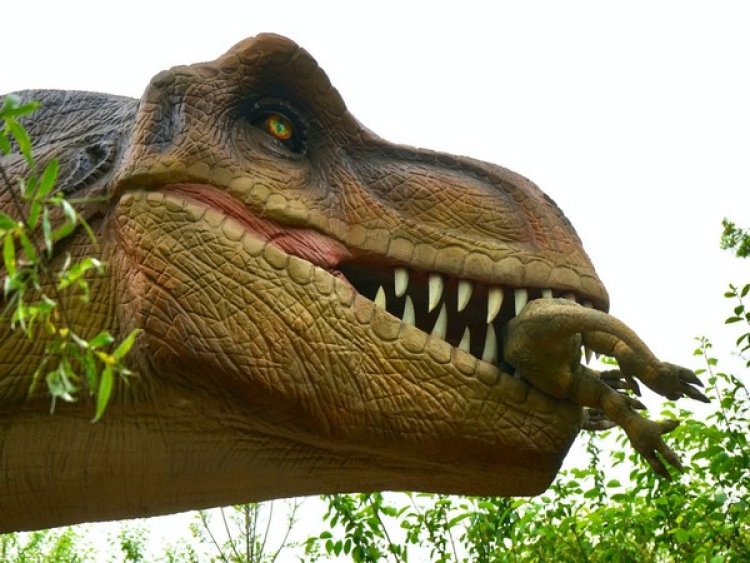Scientists discover what all did earliest dinosaurs like to eat from their teeth

Bristol, UK: According to a group of palaeobiologists from the University of Bristol, the earliest dinosaurs contained carnivorous, omnivorous, and herbivorous species.
Experts could compare the earliest dinosaurs' teeth to modern reptiles and their diets by examining their tooth forms and reproducing their dental functions with computational modelling.
Their research, which was just published in Science Advances, demonstrates that several types of plant-eating dinosaurs were historically omnivorous and that our iconic long-necked herbivores, like Diplodocus, had meat in their diets. Early on in their evolution, they developed the capacity to change their diets, which probably accounts for their ecological and evolutionary success.
The earliest dinosaurs are enigmatic: they were much smaller than their later relatives and for most of the Triassic they were in the shadow of crocodile-like reptiles. It is unknown how diverse they were in terms of diets and ecology, but scientists know something must have happened in the Triassic that allowed dinosaurs to endure the Triassic-Jurassic mass extinction and adapt in its aftermath, becoming the dominant group for the rest of the Mesozoic.
Lead author Dr. Antonio Ballell from the University of Bristol said "Soon after their origin, dinosaurs start to show an interesting diversity of skull and tooth shapes. For decades, this has made palaeontologists suspect that different species were already experimenting with different kinds of diets. They have compared them to modern lizard species and tried to infer what they ate based on the similarities in their teeth.
"We investigated this by applying a set of computational methods to quantify the shape and function of the teeth of early dinosaurs and compare them to living reptiles that have different diets. This included mathematically modelling their tooth shapes and simulating their mechanical responses to biting forces with engineering software."
Professor Mike Benton, co-author of the study, said: "With this battery of methods, we were able to numerically quantify how similar early dinosaurs were to modern animals, providing solid evidence for our inferences of diets. Theropod dinosaurs have pointy, curved and blade-like teeth with tiny serrations, which behaved like those of modern monitor lizards. In contrast, the denticulated teeth of ornithischians and sauropodomorphs are more similar to modern omnivores and herbivores, like iguanas."
The study is also innovative in using machine learning models to classify the earliest dinosaurs in different diet categories based on their tooth shape and mechanics. For instance, Thecodontosaurus, the Bristol dinosaur, had teeth well adapted for a diet of plants.
Professor Emily Rayfield, senior co-author, said: "Our analyses reveal that ornithischians - the group that includes many plant-eating species like the horned dinosaurs, the armoured ankylosaurs and the duck-billed dinosaurs - started off as omnivores. And another interesting finding is that the earliest sauropodomorphs, ancestors of the veggie long-necked sauropods like Diplodocus, were carnivores. This shows that herbivory was not ancestral for any of these two lineages, countering traditional hypotheses, and that the diets of early dinosaurs were quite diverse."
Dr. Ballell concluded: "It seems that one of the things that made the first dinosaurs special is that they evolved different diets throughout the Triassic, and we think this might have been key for their evolutionary and ecological success."
Dinosaurs dominated the land during the Mesozoic era until their extinction 66 million years ago. They included giant veggie groups like the long-necked sauropods and meat-eating species like Tyrannosaurus rex and its relatives. However, their origins were much humbler and date back to the Triassic period, with the first definitive dinosaurs appearing approximately 235 million years ago.















































